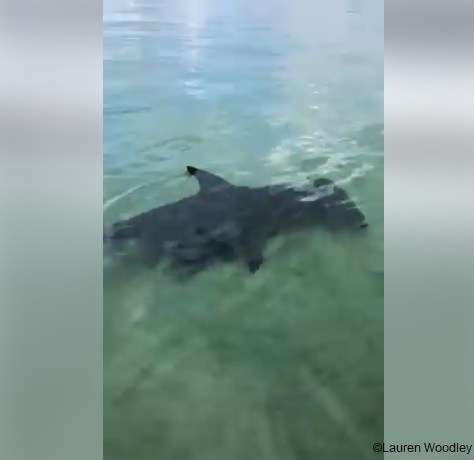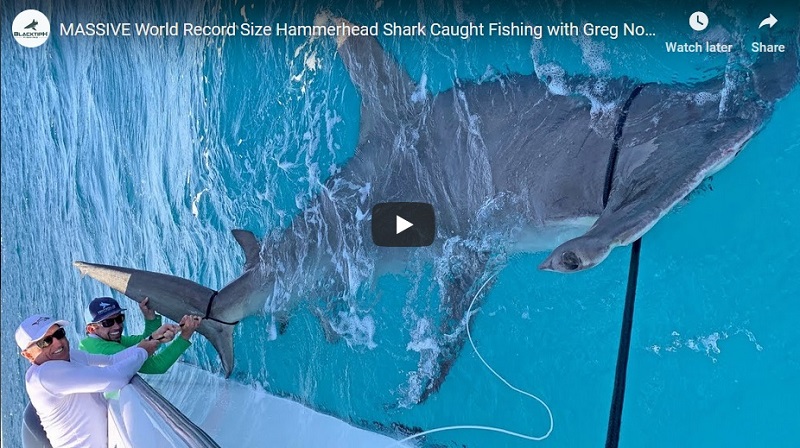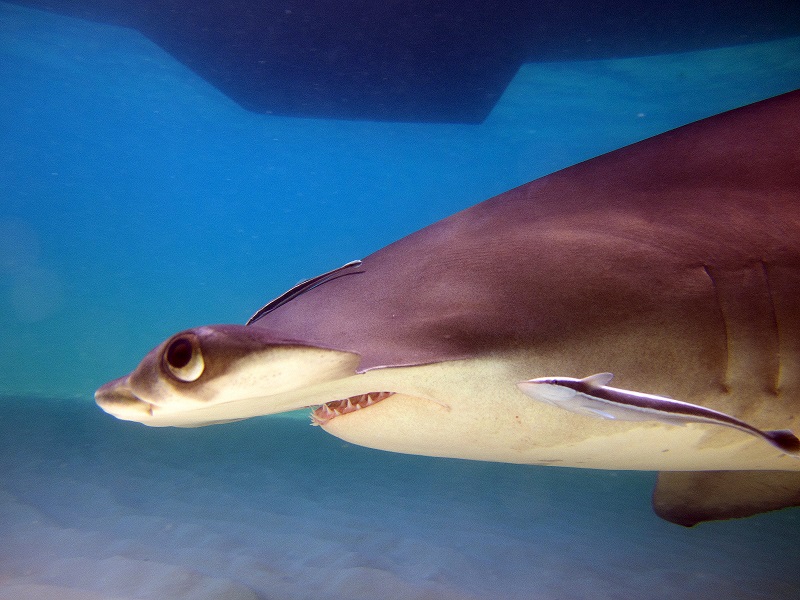It’s not surprising that when many people think of a large shark, the first image that comes to mind is likely that of a mature great white shark lurking in the depths. It’s also not surprising to see the reactions of stunned beach goers when they see an 8-foot-long bull shark, 10-foot-long tiger shark, or 12-foot-long great hammerhead in water so shallow that their backs are barely covered.
While it is true that many of the largest great white sharks ever recorded have been found near Guadalupe Island where the water may reach depths in excess of 10,000 feet, this doesn’t necessarily mean that they can’t also be found in shallow waters. Most sharks, after all, are nomads. They travel to different locations throughout the oceans depending on the time of year in search of food… or a mate.
https://www.facebook.com/lauren.woodley.35/videos/1834277033276810/UzpfSTUzNjk5MDk1MDoxMDE1NTU5ODgwMzQzNTk1MQ/
For example, the great hammerhead shark. These sharks can reach over 14 feet long and weights of 1,000lbs. As the water warms throughout the year, an adult may leave their winter home in Bermuda to travel to the Gulf Coast of Florida. This journey will take them from warm tropical waters through the depths of the Atlantic Ocean to the shallow, warm coastal waters where they will thrive on crustaceans, stingrays, and various types of fish. A video posted September 24 by Lauren Woodley near Destin Florida, shows these very large sharks can be found cruising in only a few feet of water in search of a meal.
Photo: 1. Alicia Dufrene Facebook, 2. Kayla R. Blanks Facebook, 3. Disc golf Ant YouTube
Sharks rely heavily on special receptors in their snout known as ampullae of Lorenzi. These receptors allow them to detect electrical impulses of potential prey. The unique design of a Hammerhead is intended to spread out these receptors allowing them to search larger areas at a time. This behavior can make it look like they’re using a metal detector searching for treasure in the sand. Often, this “treasure” is a stingray that buried itself under the sand in shallow water along a beach. The sight of a large shark swimming in shallow water is certainly as ominous as it is beautiful, but the behavior is completely natural and poses little real threat to swimmers. A calm but prompt exit from the water would still be in order to eliminate any potential risk.
In an incredible video posted by BlackTipH, a professional angler, you can witness both the sheer numbers of blacktip sharks (which can grow over 6 feet long) in close proximity to the beach during their annual migration along the eastern coast of the U.S. with large hammerhead’s following looking for a meal.
These blacktip sharks, while smaller in size than some of the more notorious species, are actually found to be responsible for a significant number of the bites in places like Florida where they are commonly found. A primary reason for this is their tendency to frequent warm shallow water along beaches. In addition, waves and a large presence of bait fish creates feeding behaviors in water with low visibility increasing an opportunity for mistaken identity. Fortunately, their attacks are usually minor resulting in bite marks requiring a few stitches.
While these hunting habits and migrations are not new behaviors, an increase in the number of people enjoying the water along with social media’s ability to spread news quickly may account for a perceived increase in the number of sharks near shore.
The odds of being attacked by a shark are astoundingly low, but there are several things you can do to further reduce your risk.
• Don’t swim at dusk or dawn. These are peak feeding times.
• Don’t wear shiny jewelry. This draws shark’s attention often resembling fish scales.
• Avoid swimming if you have an open cut. Sharks are known for their amazing ability to detect blood in the water.
• Swim at beaches with life guards on duty. They assist in watching for sharks. Equally as important, most are trained to render first aid in the rare event of an attack.
The verdict? There are well over 400 species of sharks on our planet. Depending on your location, the season, and the species of shark… it is quite possible to witness large specimens of these impressive animals at any depth of our vast oceans.
Ron Babington is a recreational shark fisherman with a love for promoting a better understanding of the invaluable role of sharks in our ecosystem and how to safely coexist with them. His next article is titled Pay the Taxman? Spearfishing . . . and sharks..



